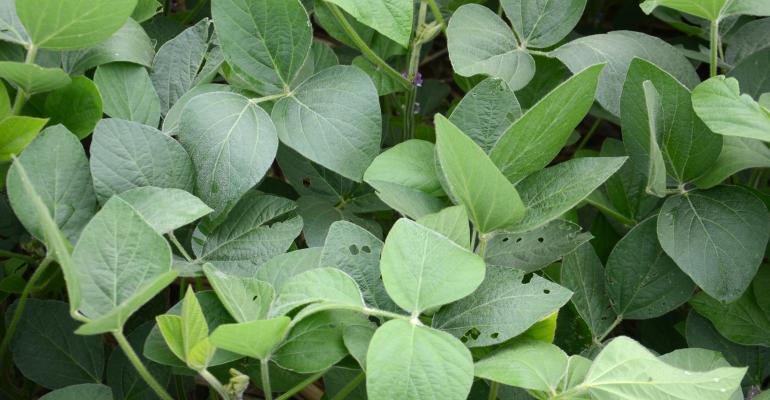Should you apply insecticide with fungicide?

Soybean Pest Beat: Opinions vary on using insecticide for preventive vs. curative treatment.
May 31, 2022
We will apply fungicide on most of our soybean acres. I can’t decide whether to add insecticide. My entomology professor at Purdue preached Integrated Pest Management — you don’t spray until you see bugs. What should I do?
The panel of Indiana certified crop advisers answering this question includes Betsy Bower, agronomist for Ceres Solutions, Lafayette; Shaun Casteel, Purdue Extension soybean specialist; Greg Kneubuhler, G&K Concepts Inc., Harlan; and Bryan Overstreet, Purdue Extension educator, Jasper County.
Bower: You should know if there are insects in your soybean fields. In my experience, we have plenty of insects of all kinds, like bean leaf beetles, Japanese beetles, stinkbugs, grasshoppers and Mexican bean beetles. Sometimes we can have all of them at the same time eating soybean leaves, but not reaching the economic threshold of any one of the insects alone.
My experience in southwest Indiana says add the insecticide if you find one, two or three types of insects lightly damaging soybeans at the same time. There have been years we’ve protected yield by several bushels vs. an untreated check.
Kneubuhler: Though Integrated Pest Management is good stewardship, it’s hard to deny the synergy from combining insecticide with fungicide. Research has shown that typically, a synergistic effect occurs when insecticide is added to the fungicide, although yield gains vary from year to year. Like fungicides, you often need to incorporate the insecticide into the program before the problem exists. Most often, by the time you wait to apply the insecticide, the damage has already occurred. Although costs are up, insecticide is still one of the cheapest inputs. Pod feeders such as bean leaf beetle, rootworm beetles and Japanese beetles don’t have to feed much to make insecticide pay.
Overstreet: Scout fields before you apply fungicide and see if there is a need to add insecticide. You can also check out the Purdue Crop and Pest Report, published weekly. This may give you some guidance of issues that others are seeing elsewhere that may affect you in the future. With the cost of inputs at record highs, make sure there is need for the added expense.
Casteel: The addition of insecticide to a fungicide application during pod development is a difficult decision. Many choose a generic pyrethroid that is inexpensive. The thought is just, “Go ahead and throw it in!” We’ve seen soybeans respond to insecticide protection, but those are usually when insects are at or above threshold. Likewise, we’ve seen soybean yields decreased with an insecticide application because that application took out beneficial insects. For example, you could kill ladybugs that feed on soybean aphids. Then, the soybean aphid population might explode.
Scout soybean fields for insects and determine if they’re at or will build to the threshold level. Do not apply an insecticide at the first sight of insect pests, but monitor them if the population is building. Many pests like Japanese beetles cause cosmetic damage, but defoliation is quite minimal. The main insect culprits to be on the lookout for include bean leaf beetles, stinkbugs and soybean aphids. Pay particular attention to the numbers of each one of them for the individual threshold as well as the collective whole threshold.

